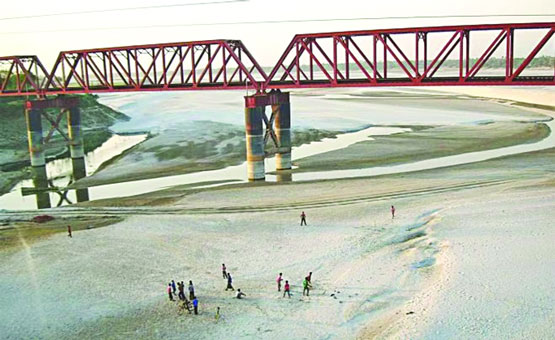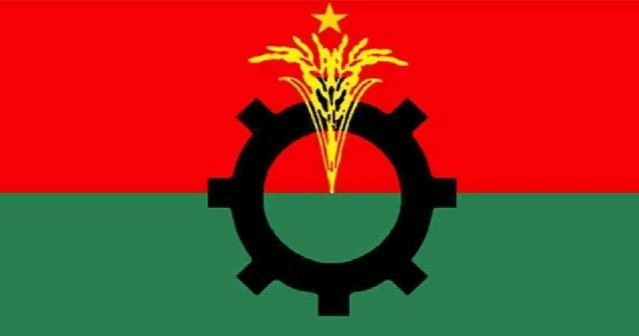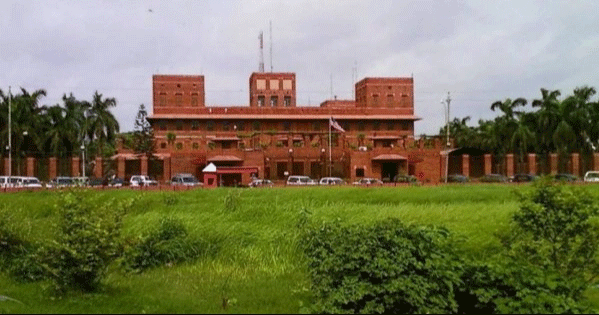Cry for water
Water level dropped below 40 feet
Farakka reduces 700-yr life span of rivers
Mahfuz Emran: At least five lakh people live in Barisal City Corporation area. Two water treatment plants of 3.2 million liters capacity were set up for this population. This source of underground water supply was capable of meeting the needs of half the people of the city area. But since the two treatment plants could not be commissioned, the Nagar Bhaban allowed installation of deep tubewells at the individual level. From 2016 to this year, more than 4,500 deep tube wells were allowed to be installed. The obstacle lies elsewhere. During the summer season, water does not rise in the tubewell for the last three years. Due to which the installation of submersible pumps is being forced.
The City Corporation says that if the water treatment plant was operational, there would have been a calculation of water extraction. There is no calculation of how many crores of liters of water are being lifted by installing submersible pumps at the individual level.
The opposite picture is in Patharghata, a coastal upazila of Barguna district. The residents of Patharghata municipality bordering the Bay of Bengal are 30,000. Surrounded by rivers and reservoirs, one has to struggle for a glass of safe water.
Patharghata Municipality Mayor Anwar Hossain Akon said that the residents of the municipality cannot collect drinking water even by installing deep tubewells.
Tubewell water is so salty that there is no way to give it to the mouth. Water is supplied to the residents of the municipality through a pipeline from an underground source 14 km away from the municipality. However, it does not make up for the lack of water. Due to load shedding, I can’t supply water in line on time.
Not only Barisal City Corporation or Patharghata Municipal Town, Patuakhali, Pirojpur, Jhalkathi and Barguna also face fresh water concerns when the dry season comes. But hundreds of rivers and canals flow through these districts like a spider’s web. That is why Barisal is also called the land of water. But till now there is no water crisis in Bhola.
Water level dropped below 40 feet
Hargobinda Saha, a deep tube well installation engineer, said that in Barisal city and Lagoa Kashipur, Charkaua, Raipasha-Karapur, Jagua, Charbaria Union, fresh water was available at a depth of 15 to 20 feet even five years ago. Which currently stands at a depth of 25 to 40 feet. Areas that are densely populated and have deeper tubewells have to go very deep to get the water table.
According to the sources of Directorate of Public Health and Engineering, more than 150 villages out of 42 upazilas of six districts of Barisal division have shortage of drinking water. Apart from this, there are also Municipalities, City Corporations in the area.
Badal Howladar, Head of Barisal Zone of Bangladesh Bandhu Foundation, a development organization working for drinking water, said that till now we are providing drinking water in two projects in Mathbaria of Pirojpur and Patharghata of Barguna. About 20 thousand families are able to get water from 35 plants.
Iqbal Hossain, a resident of Ikri Union in Bhandaria Upazila of Pirojpur, said that when the month of Falgun comes, the water in our tube well stops rising. When Jaishtha-Ashadha month comes, it becomes normal again. I went to the upazila public health engineer. He asked to install the submersible. He said that the underground food water level has gone down.
Miraj Mia of Jhatibuniya village of Sapleja union of Mathbaria upazila said that when Chaitra month comes, the water in the tubewell also dries up along with the pond canal. I bought plastic gallons for that. Hold water during rain. I also boil pond water and drink it.
Parveen Begum of Mathbari Union of Rajapur Upazila of Jhalkathi said that since the water in the tube well has stopped rising, I have installed the submersible. Now there is no shortage of water.
Mahmud Hasan, a volunteer of Patuakhali, said that the water shortage is evident in the city. When the municipal authorities pump water in their pumps, water does not rise in the tube wells of Ward No. 1. That is why the municipal authority collects water at night and the residents during the day. Day by day due to various reasons the water level is going down and this situation is being created.
Why southern region crying for water?
Bangladesh Agricultural Development Corporation (BADC) Barisal divisional office said there are 752 pumps in six districts of the division for irrigation of crop fields. Among them 222 in Barisal district, 184 in Bhola, 103 in Pirojpur, 65 in Jhalkathi, 118 in Patuakhali and 60 in Barguna. All these government pumps are surface water pumps. Groundwater pumps are generally not required in southern areas. Still, many people use ground water pumps for their own benefit, which is not approved by Bangladesh Agricultural Development Corporation or the information is not in the hands of this department.
BADC Barisal District Executive Engineer Syed Wahid Murad said that irrigation pumps usually do not use underground water. But individual deep tubewells, submersible pumps are pumping groundwater.
Barisal University Soil and Environment Department Chairman Dr. Md. Jamal Uddin said, the water crisis in the southern region has been created in the distant past. The area is also undergoing construction of overcast concrete structures – these structures are using ground water sources. People are polluting and encroaching canals, ponds. Approximately 70 percent of the number of canals, ponds and reservoirs that existed in Barisal even 12 years ago are no longer there. On the one hand, groundwater is used for all purposes as a source of water. As a result, the ground water level is going down. Surface canals, ponds, reservoirs which are sources of recharge to meet the status quo have been killed. As a result, the underground water level is not able to rise above the level after being recharged.
He also said that when there is a vacuum in the atmosphere, the surrounding air enters and fills it. Similarly, due to the excessive lifting of underground water, the surrounding water is entering the void. Surface saline water is infiltrating before treatment. That is why the salinity of the water in the womb is increasing. Humans are entirely responsible for the fresh water crisis in the southern region.
Another expert Barisal University coastal studies and disaster department chairman Hafiz Ashraful Haque thinks that not only groundwater extraction is the reason, but another important reason is the Farakka Dam.
He said, people do not consider the resource of underground water – it can be exhausted. In the last 20-30 years, the depth of rivers and canals in the southern region has decreased. Township in Bhati area of Bangladesh. The Farakka Dam has forcibly stopped the water coming upstream in violation of international law. So, the Farakka dam is primarily responsible for the situation that has started all around for fresh water. Rivers dried up, lost navigability, river catchment flow destroyed by Farakka Dam. The condition of our rivers in these 50 years after Farakka dam, rivers like Padma, Jamuna are drying up. Without Farakka, it would have taken us at least 700 years to reach such a state. That means that what would have been our 700 year life span has been reduced by a dam to 650 years. Our surface water resources have been destroyed due to Farakka. Secondly, people are using more ground water for all purposes. But it is not recharging compared to that. Due to which ground water will go down it is normal.
Dr. Hafiz Ashraful Haque expressed concern that the people of the southern region are close to a disaster for drinking water. He advised to use this water only for consumption instead of using ground water for all purposes.
What authorities say
Directorate of Public Health Engineering Barisal District Executive Engineer Imran Tarafdar said, it is sad that the fresh water shortage is increasing in the Barisal division surrounded by rivers, canals and reservoirs. Users are actually responsible for creating this crisis. Groundwater is being used for industrial plants, agricultural land, and daily activities. Water scarcity usually occurs in densely populated areas.
He said, we are creating the crisis of getting fresh water by using underground water for all activities.
Supervising Engineer SM Shahidul Islam, Directorate of Public Health Engineering, Barisal Circle, said that for the past 3-4 years, when summer comes, there is a shortage of fresh water in different areas of Barisal division. This problem is occurring because the ground water level is going down. Because of this, water cannot be lifted easily even in deep tube wells. Submersible pumps are being installed in areas where such problems have occurred. Because hard layers of water appear in many places. Without the use of alternative technologies, it is not possible to meet the demand for fresh water. However, when the monsoon season comes, the water table rises to the surface. Then the problem is reduced,the official added.
President Joe Biden tests positive for COVID-19 while campaigning in Las Vegas, has ‘mild symptoms’
International Desk: President Joe Biden tested positive for COVID-19 while traveling Wedne…








